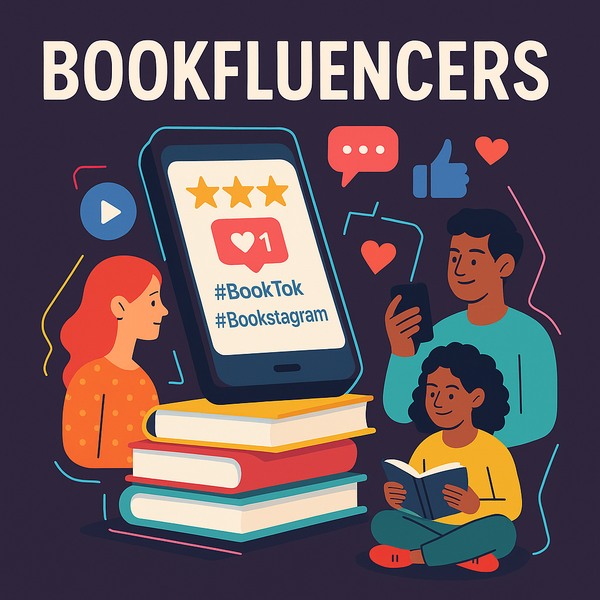How to repurpose your personal author stories into engaging content

Turning your story into everyday connection
As an author, your stories don't have to live only between the covers of your book. Those personal moments, writer’s block struggles, inspiration sources, they’re gold for building an ongoing connection with readers. Knowing how to repurpose your personal author stories into vibrant, creative content can make your author voice unforgettable and your audience more engaged.
Think of it this way: storytelling isn't just what you write, it’s how you share the journey. Whether through blog posts, social media, podcasts, or virtual events, each medium allows your story to breathe in new ways.
Why personal stories sesonate
Our brains are wired for narrative. Personal stories tap into empathy, curiosity, and emotion, drawing readers closer. When authors transform snippets of their writing process or personal anecdotes into content, it not only humanizes their brand but creates touchpoints readers remember.
Take Amanda Lovelace, for instance. She began as an Instapoet, sharing deeply personal, poetic reflections online. Her poems resonated because they were real, raw, and relatable. That connection transformed into book deals and bestseller status. Her ability to repurpose personal voice across mediums allowed her work to flourish beyond the page.
Humorously, Sarah Schmelling took “Hamlet” to Facebook, imagining royal dramas as social media updates. That repurposing, bringing classic stories into modern structures, transformed an absurd idea into a bestselling book and a fresh narrative approach in literary comedy.
These are not distant celebrities, they’re examples of creative repurposing rooted in human experience. You're walking the same path by reusing your lived stories.
Chapter to content: Mapping your stories
Start with a story you know inside out. Maybe it’s what inspired your book, how you discovered your genre, or a setback you overcame. Use this as seed content and think:
- Could this be turned into a blog “Behind the Story” post?
- What about a newsletter “Author Confessional”?
- Could it spark a mini-video or Instagram Reel?
- Might it fuel a podcast episode—maybe reading it aloud and explaining the emotions behind it?
For nonfiction authors, the process is more straightforward: take your insights and convert them into cheatsheets, RSS posts, social carousels, or newsletter tips. Pooja Arshanapally, known as “The Content Repurposer,” recommends gathering your core themes and supporting quotes, then mapping them into new formats. She writes: “Repurpose content… adapt it for another audience” to save time and increase reach.
Make it conversational and accessible
When translating stories into content, write like you would speak—authentically. Share your excitement, confusion, or joy—in real time. For instance:
“I still remember the first time I held my printed book. My hands were shaky—I had worked on that manuscript for over two years. I posted a shaky iPhone video of the moment, and the energy it created? Unbelievable. People connected. That moment turned into a blog, then a series of social posts, then a mini newsletter segment.”
That’s storytelling made scalable and deeply human.
Content types that work
Blog Posts & Articles
Expand a meaningful anecdote into a deeper insight. Start with the incident, share the lesson, invite reflection. These posts build SEO, trust, and author-Audience bonds.
Social Media Snippets
Capture the same moment in a different way: a quote-image, a one-minute snapshot video, or even a single line caption. Use trending formats like Reels or Stories to piggyback visibility while keeping the content intimate.
Newsletters & Email Sequences
Offer personal tangents about the book’s journey. Behind-the-scenes conflicts, your writing soundtrack, even caffeine-fueled late-night edits—these reduce distance between you and your audience. A short story about editing during a blackout can be turned into an email series starter.
Podcasts or Live Events
Host a mini “Story Behind the Book” series. Record audio footage of you writing in a café, share what inspired a twist in the plot, or even host a livestream answering listener questions about your creative process.
When fiction authors repurpose personal stories
Writers of fiction can take their real-life insights into fictional-framework marketing. Share what inspired your character's quirks, the real place that influenced your book's mountain cabin, or how your personal fear of public speaking informed a stage scene.
Perhaps you struggled with procrastination and turned that into your antagonist’s downfall. Turn that into an Instagram Live or blog post that ties your personal growth to your characters’ arcs, inviting readers into your creative world.
Real words from authors
“In the run-up to my book launch, I saved my manuscript and labelled it ‘Social media posts.’ I highlighted quotes and anecdotes I wanted to remix into content,” says author Anna Featherstone, who kept the tone and energy alive by carrying her voice across content.
And from the Elite Authors blog:
“Repurposing your book’s content into blog posts, podcasts, and social media not only maximizes your hard work but helps you reach new audiences,” writes Elite Authors in July 2025.
These quotes remind us that first, we are storytellers; everything else flows from how we share that story again and again.
Strategy, not overwhelm
Don’t try to repurpose everything at once. Begin with one resonant memory or favorite chapter excerpt. Turn it into:
- A blog post.
- A social media clip.
- A newsletter hook.
See what engages, refine your voice, and repeat. Over time, a small well of stories becomes a reservoir of evergreen content.
Final thoughts: Keep stories alive
Your author stories are your biggest asset. By repurposing them, you extend their lifespan, deepen reader connection, and build momentum while saving time. Each retelling shines a new light on your identity and craft.
Write boldly, share authentically, and remember: your voice is the thread connecting every story, every platform, and every reader. If you’d like to explore these strategies further, or test them with a supportive community, join PubliWrite, where authors share, adapt, and grow together.
Because your stories aren’t static. They’re living, breathing parts of your author journey, and they deserve to be told again and again, on your terms, in your voice.





